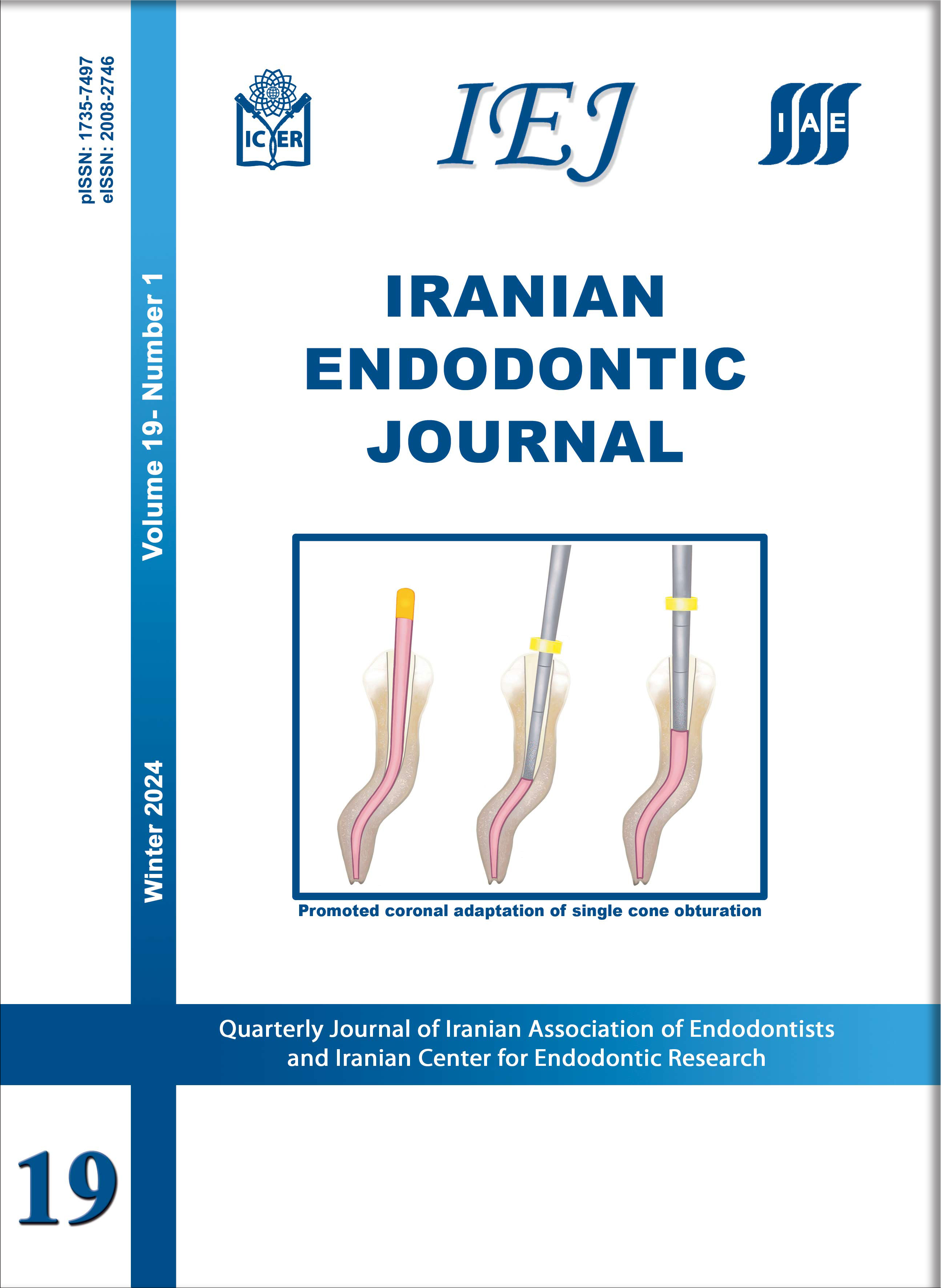Effect of Obturation Techniques on the Quality of Root Canal Fillings: A Systematic Review and Meta-analysis of in Vitro Studies
Iranian Endodontic Journal,
Vol. 19 No. 2 (2024),
20 March 2024,
Page 61-74
https://doi.org/10.22037/iej.v19i2.40210
Introduction: The current study aimed to compare the quality of root canal obturation performed with cold lateral condensation with other obturation techniques. Materials and Methods: Diverse Search was conducted using six electronic/academic databases following PICOS (i.e. population, intervention, control, outcomes, and study design) strategy: (P) Extracted mature permanent teeth; (I) Obturation techniques except for cold lateral condensation; (C) Cold lateral condensation tyechnique; (O) Quality of root canal obturation; and (S) In vitro studies assessing parameters using micro-computed tomography. The statistical method used for the meta-analyses was the “inverse variance DerSimonian-Laird test”. The heterogeneity data was calculated using the T2, Cochran Q test, and I2 statistics. Results: Fifteen studies were included for the final analysis; one had a low risk of bias, eight a moderate risk, and six a high risk of bias. Ten studies were selected for meta-analyses; three studies comparing cold lateral condensation with carrier-based gutta-percha techniques [P=0.96; mean difference (MD)=-0.02; confidence interval (CI): (-0.77, 0.73); I2=21%]; three comparing cold lateral condensation with single-cone techniques [P=0.75; MD=-0.39; CI: (-2.77, 1.99); I2=92%]; two comparing cold lateral condensation and thermo-plasticized injectable techniques [P=0.37; MD=5.91; CI: (-7.13,18.94); I2=99%]; and five comparing cold lateral condensation with warm vertical condensation techniques [P<0.0001; MD=5.29; CI=(2.84, 7.74); I2=92%]. The overall effect reported significant results [P=0.0003; MD=2.69; CI=(1.23, 4.16); I2=96%]; favoring fewer voids and gaps for the other used obturation techniques. Conclusions: Cold lateral condensation and single-cone techniques presented no statistical differences. Nonetheless, Warm vertical condensation technique had better results compared to cold lateral condensation.




